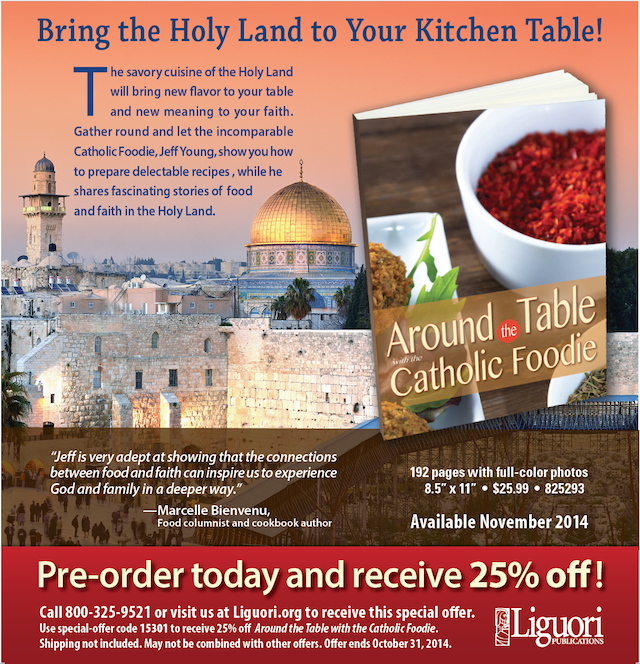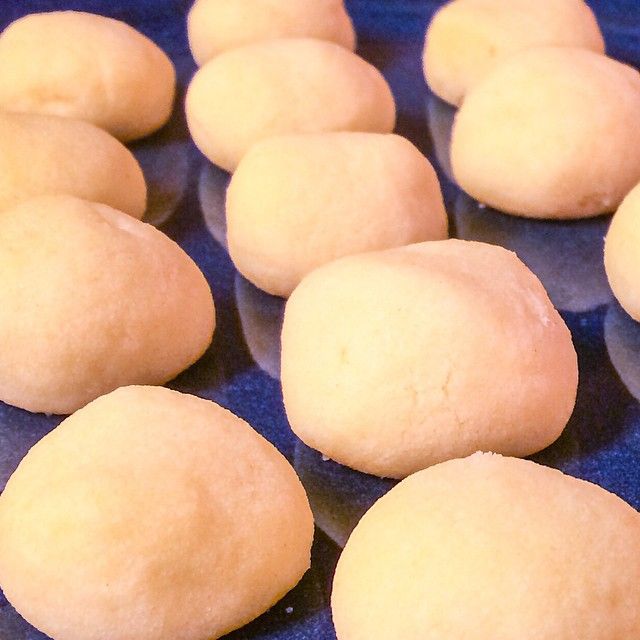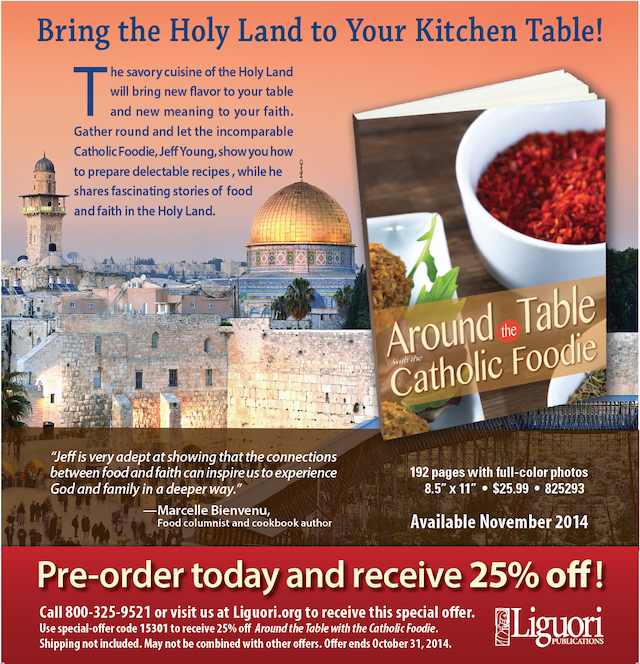7 Quick Takes: A 7 Course Vegetarian Middle Eastern Menu in Photos

This week’s 7 Quick Takes is going to be a little different.
A 7 course vegetarian Middle Eastern menu in photos as a 7 Quick Takes?
Sure! Why not?
Each photo links to its recipe on CatholicFoodie.com.
Be sure to read the “thoughts on a 7 course meal” at the end of this 7 Quick Takes. It’s something I came across a while ago, and I really like it.
Bon appetit! Or as they say in the Holy Land, “Bil Hana Wishshifa!“
Course 1 – Appetizer / Mezze – Hummus, Baba Ghannoush & Pita Bread


Course 2 – Soup – Lebanese Spinach & Lentil Soup

Course 3 – Starch – Mujadra… Lebanese Lentils and Rice

Course 4 – Main – Pan-friend Trout with Pistachios & Dill

Course 4 – Side Dish – Sautéed Dandelion Greens with Caramelized Onions

Course 5 – Salad – Lebanese Fattoush Salad

Course 6 – Fruit & Cheese – Pan-fried Halloumi or fresh Feta cheese with grapes or fresh melon would be perfect!

Course 7 – Dessert – Lebanese Butter Cookies

Thoughts on Serving a 7 Course Meal
I saw this a while back on ChefTalk.com and it stuck with me. Yes, the comments in question focus on Italian cuisine and Italian custom, but I think the same can be applied to Middle Eastern cuisine and custom.
What do you think?
In my Italian household [the 7 courses] would be:
1. Antipasto, some items that tease and enhance the appetite, like pickled mushrooms, raw vegetables, etc.
2. Soup or cup of broth
3. Pasta, gnocchi, ravioli’s
4. Entree with vegetable, no starch…you just had it in #3
5. Salad
6. fruit & cheese (like melon slices and dry smoky cheese)
7. Dessert (which may only be cookie assortment and coffee)
Since you don’t have staff relax the evening, keep it simple. If there are lots of different dishes you want to make… just have them to dinner again.
The goal is to keep the conversation going and everyone enjoying themselves, not to feed them massive quantities with each course of food. When I have Italian guests I will serve this way, with others the guest can get uncomfortable, they think they must fill up on every course; you must “school” them. None of the courses are heavy, they aren’t filling in themselves, they enhance the course before and the course after.
And you form the evening with the courses, let everyone relax, aperitif, cocktails with the antipasto; course 2, 3 & 4 are pushed together a bit, they flow one after the other. The salad is staged by the table, ready as soon as the entree is cleared, but the eating of the salad is not rushed, it is eaten at every one’s individual pace. I may set my fruit and cheese platters along with small plates at the center of the table before all of the salads are eaten, letting everyone help themselves as they are ready and pour more wine. The salad/fruit course can be 45 min. to 2 hour, at my house but I clear the plates in the mean time, and will usually stage my coffees, liqueurs and dessert at the table so I can set and simply offer as my guests are ready.
You must develop your own technique to getting your self back to the table and set down with the guests; otherwise you just become a restaurant. I always set in the middle of the table, I can join in immediately when I set down; it doesn’t work as well if I set at the end of the table.
I don’t not clean anything during the dinner, I clear. If you do more everyone thinks they should help you in the kitchen and once everyone starts getting up and down it’s hard to keep the table involved and the conversation flowing.
Around the Table with The Catholic Foodie: Middle Eastern Cuisine Is Now Available for Pre-Order:
